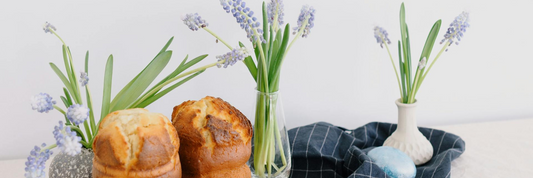Glass bottles are a popular choice for packaging due to their durability, versatility, and eco-friendly nature. Used in a variety of industries, from food and beverages to cosmetics and pharmaceuticals, glass bottles offer a premium, sustainable solution. In this blog post, we’ll explore the different types of glass bottles, their unique benefits, and how to choose the right one for your product.
Introduction to Glass Bottles

Throughout history, glass bottles have played a significant role in the storage and transportation of various liquids. The earliest known glass bottles date back to around 1500 BC in Egypt and Mesopotamia. Initially, these bottles were handcrafted and primarily used for perfumed oils and expensive liquids. Over the years, the evolution of glass-making techniques has led to mass production, making glass bottles ubiquitous in our modern lives.
The transition from fragile, hand-blown glass to the robust, versatile bottles we utilize today reflects technological advancements and shifts in consumer preferences. Today, glass bottles are not only a staple in households but also an essential component of the food and beverage (F&B) industry.
What makes glass bottles particularly appealing in the F&B sector? For starters, glass is an inert material, meaning it does not react chemically with stored substances. This quality ensures that the flavor, aroma, and quality of the contents are preserved something many manufacturers and consumers prioritize.
Advantages of Using Glass Bottles in F&B
- Preservation of Quality: Glass bottles provide excellent protection against contamination, oxidation, and UV light, which can degrade the quality of liquids over time.
- Taste Integrity: Unlike plastic, glass does not leach chemicals into its contents, allowing beverages and foods to maintain their intended flavor.
- Reusability: Glass bottles can be washed and reused multiple times without compromising their integrity.
- Visual Appeal: The aesthetic attributes of glass can enhance product presentation, making it a preferred choice for premium products.
Eco-friendly and Sustainable Features of Glass Packaging
Live in a world increasingly focused on sustainability, glass bottles stand out as an environmentally friendly option. They are 100% recyclable and can be recycled endlessly without losing quality or purity. Moreover, the use of glass reduces the carbon footprint associated with plastic production, making it a favored choice among environmentally conscious businesses and consumers alike.
Furthermore, the perception of glass as a cleaner, safer packaging alternative often influences consumer purchasing decisions. As more brands shift towards sustainable practices, the appeal of glass bottles continues to grow within the F&B industry.
Classification by Shape and Application
Glass bottles come in various shapes and sizes, each designed for specific applications. Here, we explore some of the most common types found in the F&B industry.
Boston Round Bottles
- Features: Characterized by their cylindrical body, short neck, and round base, Boston round bottles are versatile and easy to handle.
- Uses: Often used for essential oils, pharmaceuticals, and cosmetics, these bottles are popular due to their ability to hold a variety of liquid types safely.
Long Neck (Woozy) Bottles
- Features: With a long neck and narrow body, woozy bottles are easily distinguishable and facilitate controlled pouring.
- Uses: They are commonly utilized for sauces, wines, and juices, where precision in pouring is essential for the consumer experience.

Paragon Bottles
- Features: Tall and cylindrical, paragon bottles are designed for efficient content visibility and accessibility.
- Uses: Frequently used for syrups, condiments, and flavorings, these bottles are ideal for showcasing the vibrant colors of their contents.
French Square Bottles
- Features: Recognized for their square shape and stackable design, French square bottles maximize space efficiency and are often visually appealing.
- Uses: These bottles are popular for packaging spices, dry goods, and cosmetics, providing a modern touch to shelf displays.
Hexagon Bottles
- Features: Notable for their unique hexagonal design, hexagon bottles offer a stylish option for packaging while standing out on shelves.
- Uses: Often utilized for honey, jam, and gift items, the aesthetic appeal of these bottles can enhance the perception of luxury and quality.
Straight-Sided Bottles
- Features: With straight walls that facilitate easy labeling, straight-sided bottles are popular for branding purposes.
- Uses: Ideal for pharmaceuticals, cosmetics, and various food products, their simple design is effective in conveying a brand’s message clearly.
Euro Dropper Bottles
- Features: These bottles come with a dropper cap that allows for precise dispensing of liquids.
- Uses: They are commonly used for essential oils and medicines, facilitating accuracy in dosing while also ensuring user convenience.
Roll-On Bottles
- Features: Featuring a roller ball top, roll-on bottles provide a user-friendly application method.
- Uses: These bottles are favored for perfumes, oils, and personal care products where ease of use and precision are important.

Benefits of Using Glass Bottles
Eco-friendly and reusable
Glass bottles stand out as an environmentally sound choice compared to their plastic counterparts. They are made from natural materials like sand, soda ash, and limestone, which means they can be recycled indefinitely without losing quality. Using glass not only reduces plastic waste but also encourages sustainable habits, as consumers can reuse them for various purposes be it drinks, sauces, or homemade products. The reduction in single-use plastics is crucial in combating pollution, making glass bottles an eco-conscious decision.
Better product preservation without quality compromise
One significant advantage of glass bottles is their ability to maintain the purity and flavor of products. Unlike plastic, glass is non-porous and does not absorb flavors or odors, making it ideal for storing beverages and food items. For instance, wine stored in glass bottles can age beautifully without compromising its taste. Studies have shown that products stored in glass often have a longer shelf life due to resistance to sunlight and air exposure, ensuring that quality is preserved over time.
Enhances product aesthetics and brand value
Glass bottles offer a level of sophistication that can elevate a brand's image. With their clear and elegant appearance, they allow consumers to see the product inside, adding to its perceived value. A beautifully designed glass bottle can make a simple drink feel premium. Brands often leverage this by investing in unique shapes and eye-catching labels, creating a strong visual appeal that grabs consumers' attention on the shelves. This aesthetic enhancement can translate into better sales and customer loyalty.
Safe for consumer health
Health safety is another compelling reason to consider glass bottles. Many people are becoming increasingly aware of the harmful chemicals found in some plastics, such as BPA, which can leach into food or drinks. Glass bottles, on the other hand, do not contain harmful substances and are safe for storing food and beverages. This assurance of safety resonates well with health-conscious consumers, making glass bottles a dependable choice for long-term use.
How to Choose the Right Glass Bottle
Determine usage purpose: what to store, where, for whom
Choosing the right glass bottle begins with understanding its intended use. Are you looking for something to store homemade juices, oils, or perhaps kombucha? Identifying what you plan to store will guide you in selecting a suitable design and size. Consider factors such as whether it’s for personal use or for gifting this could influence the bottle's style and capacity significantly.
Select suitable size and design
Once you have a clear idea of what to store, the next step is to consider the size and design of the glass bottle. For daily use on-the-go, a smaller size may be advantageous, while larger bottles might better suit those making batch drinks at home. The design should also match your aesthetic preferences whether you want something sleek and modern or something more vintage. Additionally, features like pour spouts or wide openings can play a vital role depending on the type of product being stored.
Check quality: thickness, sealing ability, heat resistance
Quality is a paramount factor when choosing glass bottles. Look for bottles that have a thick structure, which can offer better durability and resistance to breakage. The sealing capability of the lid or cork is equally important to ensure that the contents remain fresh. Furthermore, if you plan to store hot liquids, it’s essential to check if the bottle is heat resistant to prevent cracking or shattering.
Seek advice from reputable suppliers
Finally, it is advisable to seek guidance from reliable suppliers who can insight into the best glass bottles for your needs. These suppliers often have a wealth of information about different brands and can direct you to options that align with your requirements. Additionally, reading customer reviews can also offer invaluable insights into the real-world performance of various glass bottles.
In summary, the vast array of glass bottle types, each with its unique features and applications, reflects the versatility and importance of glass in the F&B sector. As you explore the choices available, consider how the right bottle can enhance not only the product’s appeal but also contribute to a more sustainable future.





